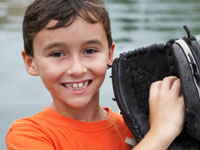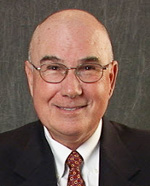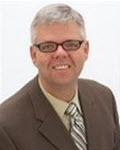Ten Tips About Baby Teeth From The Tooth Fairy

I love teeth! They're so shiny, white, and bright! They're so pretty and sparkly. That's why I collect them. But I don't want them until you don't need them anymore, so I wait for the perfect time. It usually begins when you're about five years old or older, but sometimes it happens much later. Some of your baby teeth will start to wiggle and jiggle. Then, they are finally nudged out by your grown-up teeth.
When a loose tooth comes out, that's when I go into action. Collecting teeth is my job. Kids know how much I like teeth, so they save them for me. They put them out at night, sometimes in tiny tooth pillows or plastic cases. Sometimes, I find them underneath pillows when kids are sleeping. I like it when kids think about me. I think each child is special and so are their teeth! That's why I have some tips for keeping your teeth in tip-top shape:
- Brush your teeth in the morning and at night. Twice a day is nice (and needed to keep your teeth healthy.) It's even better if you brush after eating snacks, too.
- When brushing, use just a tiny dab of toothpaste, the size of a match head.
- Brush the outside and inside of every tooth. Brush your teeth for about two to three minutes, about the time it takes to sing, "Twinkle, Twinkle Little Star" eight times!
- When brushing, don't ever eat the toothpaste. It's meant for your teeth, not your tummy.
- Brush your tongue (gently!). Those nasty cavity-causing germs like to hang out on your soft tongue, so you must brush them away.
- Floss every day. Dental floss is a piece of string that looks like thread or yarn. It's used to clean stuff out between your teeth. Ask an adult to help you. Those cavity-causing germs also like the places between your teeth to hide. Flossing gets rid of them.
- Eat healthy snacks. Your teeth like fruits, vegetables, bread, milk, and cheese that give them vitamins, minerals, and other good things for them to grow strong and shiny.
- Don't eat too many sugary foods like candy, cakes, or other desserts. Sugar is the food that those nasty cavity-causing germs really love! It gives them just what they need to go to work causing cavities on your teeth.
- Don't crunch on ice! (My friend, the Ice Fairy, doesn't like it either!) Ice wears down your teeth really fast.
- Visit a dentist twice a year. Dentists are my friends because they help to keep kid's teeth in really good shape.
Take good care of your teeth. Your baby teeth have a big job. They help your permanent teeth (the ones you'll keep forever) come into your mouth, at just the right time, in the right way. Once each baby tooth has done it's job, then I'll come collect it.
In the meantime, take the ten tips for turning your teeth into tip-top shape. (Say that ten times!)
Healthy teeth rule! The Tooth Fairy is cool!
Love,
The Tooth Fairy
By Brian J. Gray, DDS, MAGD, FICO

+Jim Du Molin is a leading Internet search expert helping individuals and families connect with the right dentist in their area. Visit his author page.
Tooth Care: Space Maintainers

What happens when a primary (baby) tooth is lost too early? An appliance called a space maintainer will be recommended by your pediatric dentist. The area of the mouth and the age of the child will determine the need for and type of space maintainer.
The primary teeth save the space for the permanent teeth. The 20 primary teeth are replaced by 20 permanent teeth. The six-year molars, twelve-year molars, and wisdom teeth will erupt (come in) in the back of the jaw. The bone will begin to grow around five years of age to make room for these teeth. If a primary tooth is lost before the permanent tooth is ready to erupt, other teeth will drift or tip into the empty space. This may block out the spot for the permanent tooth that replaces the primary tooth. The space maintainer will hold the teeth in their proper position.
Primary teeth may be lost early because of decay, crowding, injury, or improper eruption of the permanent teeth. Most space loss occurs during the first six weeks after the loss of the tooth. This may continue over the next six months. A space maintainer should be placed before this loss occurs. Sometimes, space loss cannot be avoided and your dentist can only attempt to preserve the remaining space.
There are many types of space maintainers, but two are most often used. The band and loop is used to hold the space for one tooth. The lingual arch is used to hold the space for two or more teeth that have been lost from both sides of the jaw.
If a primary molar is prematurely lost and the six-year molar has not yet erupted (come in), the parent must watch closely for the eruption of the six-year molar. This is very important because the six-year molar will rapidly tip or drift forward causing space loss. The teeth that replace the first and second primary molars ordinarily do not erupt until between nine and eleven years of age. The six-year molar must be partially erupted to make the space maintainer for early loss of a second primary molar.
Space maintainers are usually made with orthodontic bands and wires. Two appointments are necessary. During the first dental appointment, an orthodontic band is fitted on the tooth next to the space. An impression is taken. Next, the band is removed from the tooth and placed in the impression. A mold of the teeth is made with the band on the tooth. A laboratory will custom make an appliance to exactly fit the space. During the second appointment, the appliance is cemented in place.
The space maintainer is not removed until the permanent tooth begins to erupt. The parent must be sure to tell the dentist when the permanent tooth is erupting. If the space maintainer is not removed at the proper time, the permanent tooth may come in improperly. Your dentist will inform you of the age when your child's permanent tooth will likely appear. Early tooth loss may cause the permanent tooth to be delayed in its eruption or to erupt earlier than expected.
by Jane A. Soxman, DDS

+Jim Du Molin is a leading Internet search expert helping individuals and families connect with the right dentist in their area. Visit his author page.



















